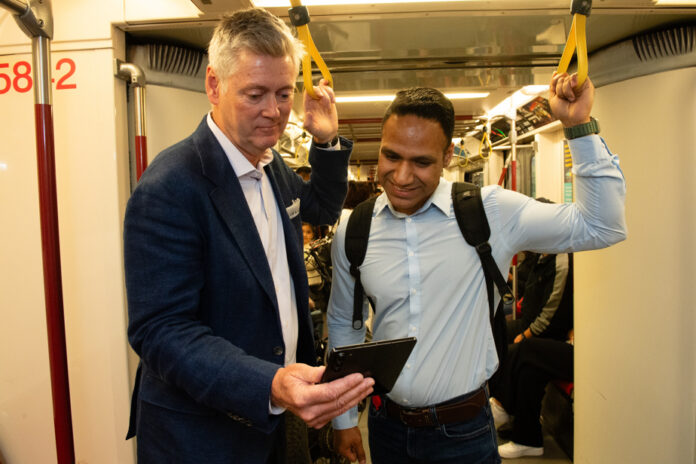(Toronto) Rogers Communications has rolled out its high-speed 5G wireless service for its own customers in key parts of Toronto’s downtown subway network, as it continues to tussle with other major telcos in subject of access for all users of public transport.
The company said it also upgraded the cellular network to provide all subway riders with more reliable access to 911 service in the same areas.
Tony Staffieri, President and CEO of Rogers, called the launch a significant milestone.
“We have stepped up efforts to modernize and expand the current network so riders can enjoy more reliable access to 911 service and connect to the 5G network from anywhere across the entire subway system, including underground,” he said in a statement.
Starting Wednesday, Rogers says customers can connect to its 5G network when they’re at Line 1 stations and tunnels in the “U” portion of downtown, from Union Station north to at St. George and Bloor-Yonge, as well as Spadina and Dupont stations.
Users will also be able to access the 5G network at 13 Line 2 stations from Keele to Castle Frank, as well as the tunnels between St. George and Yonge stations.
Rogers acquired in April the Canadian operations of BAI Communications, which held the rights to provide wireless services in the Toronto subway.
The company announced plans to upgrade existing infrastructure, which already includes cellular capability at most downtown metro stations, and roll out 5G capability for the entire network of stations and tunnels — a process that is expected to take two years.
Rogers has pledged to work with other mobile carriers and make the improved system available to everyone, but rivals have raised concerns about the company’s plans.
The federal government launched a consultation procedure last month to speed up negotiations between the main operators.
In a document submitted to Innovation, Science and Economic Development Canada (ISED) earlier this month, Rogers objected to an option being considered by the department that would prevent it from giving its customers first access to the upgraded wireless network. level. He said he preferred the matter to be settled through trade negotiations.
Rogers is committed to making the improved system available to other wireless carriers so they can provide wireless coverage to their customers. These include honoring BAI’s former contract with Freedom Mobile, which is now owned by Quebecor and is the only operator whose customers already have access to the network.
Bell and Telus have both argued for building the metro’s 5G network together using a consortium model similar to that of Montreal’s metro system, rather than a pay-per-access approach. Rogers has not publicly committed to either model.
In their own submissions to Ottawa, Bell and Telus urged the government to stop Rogers from providing first access to its customers on the TTC. These companies said that Rogers should be forced to wait until it is technically possible for all users to use the mobile network.
Stuart Green, spokesman for the Toronto Transit Commission (TTC), said the decision to launch cellular service on the subway network was entirely up to Rogers.
“Absent an edict to the contrary, we cannot and would not stop them. To our knowledge, there is nothing standing in the way of this launch,” he said in an email.
According to TTC CEO Rick Leary, this decision “further demonstrates Rogers’ commitment to providing modern, high-speed connectivity in the TTC subway system.”
“TTC and Rogers team members are working hard to bring this project to fruition quickly and I’m looking forward to seeing the end result when all wireless carriers are integrated,” Leary said. in a press release.















